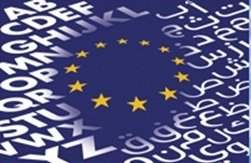
Ecological administrative buildings in Egypt
Ecological administrative buildings in Egypt
Green and energy efficient technologies are traditionally tested in innovative residential buildings. Such projects seem however to be hardly fitting the public building stock. Yet, Egypt realized a pilot project of refurbishment including solar cooling of the South Sinai Governorate.
Julien Théron - Eurojar
Egypt is well endowed with solar energy, with an average direct insolation exceeding 2000 kWh/m²/year. Based on this natural potential, MED-ENEC project introduced the concept of furnishing the administrative building of the South Sinai Governorate with solar cooling equipment. According to the 2007 UN Blue Plan, solar technology was already applied in 200,000 solar water heaters in the country. Thus, the initiative consisted in extending the solar dynamic to cooling for an administrative building of more than 560 m² floor space.
The technology of solar cooling was implemented by the installation of three absorption chillers, and 82 m2 of tube collectors. In an effort to guarantee the efficiency of the cooling system, thermal insulation with reflective coating on the roof, sealed windows to prevent air leakage, shading devices, as well as occupancy sensors for lighting control were introduced. With the implementation of the refurbishment measures, the energy consumption of the existing building was reduced by almost 47%. Dr. Heinz-Jochen Poremski, MED-ENEC II Team Leader, confirms that the technology of solar cooling proved successful in this pilot project.
Solar cooling: a competitive technology?
The incremental costs of the realized pilot project made Dr. Poremski believe that the economic feasibility of the project is not satisfying due to the high cost of the innovative technology involved –in comparison with the traditional cooling methods- and due to the relatively low cost of energy sources in Egypt.
This is the reason why Mahmoud Shaban, from the Egyptian Association for Energy and Environment (EAEE) and in charge of the design, installation, operation and maintenance of the new technology describes the project as a “success on the technological level”. According to Shaban, the most efficient solution to increase the competitiveness of respectful environment technologies is to “reduce fossil energies’ subsidies.”
Moreover, Poremski seems optimistic concerning the market potentials of this technology. He underlines that solar cooling will be very soon a competitive innovation due to the rise in energy prices and the drop of the cost of solar equipment thanks to research, development and the implementation of this technology on a larger scale.
Is it possible to promote this cutting-edge technology? In fact, an adequate subsidy for such type of equipment might reduce the return on investment timeframe of the project from 30 years to less than 6 years and a half, knowing that the operational energy costs of the building will be much less than those of a conventional building. It would be interesting for the Egyptian government to reduce fossil energy subsidies in order to support clean energies and expand its application to larger scale public buildings.
The know-how turned out to be the main component in the process. Mahmoud Shaban believes that the Euro-Mediterranean cooperation was very positive because it paved the way to “transfer this know-how at a low cost”. On the other hand, the insulation material was imported from Japan, while absorption chillers and tube collectors for solar cooling were imported from Europe and China. The cost of such imports has certainly some effect on the profitability of the project. On the other hand, the development of the market will lead to a substantial decrease in the unit cost of these imports, thanks to an economy of scale. It will also revitalize the development of local production.
The emergence of this sector will help not only in the refurbishment of administrative bureaus and private residencies in line with the new ecological and economy efficient standards, but will contribute as well in the country’s economic development and the enhancement of its technological capacities.






